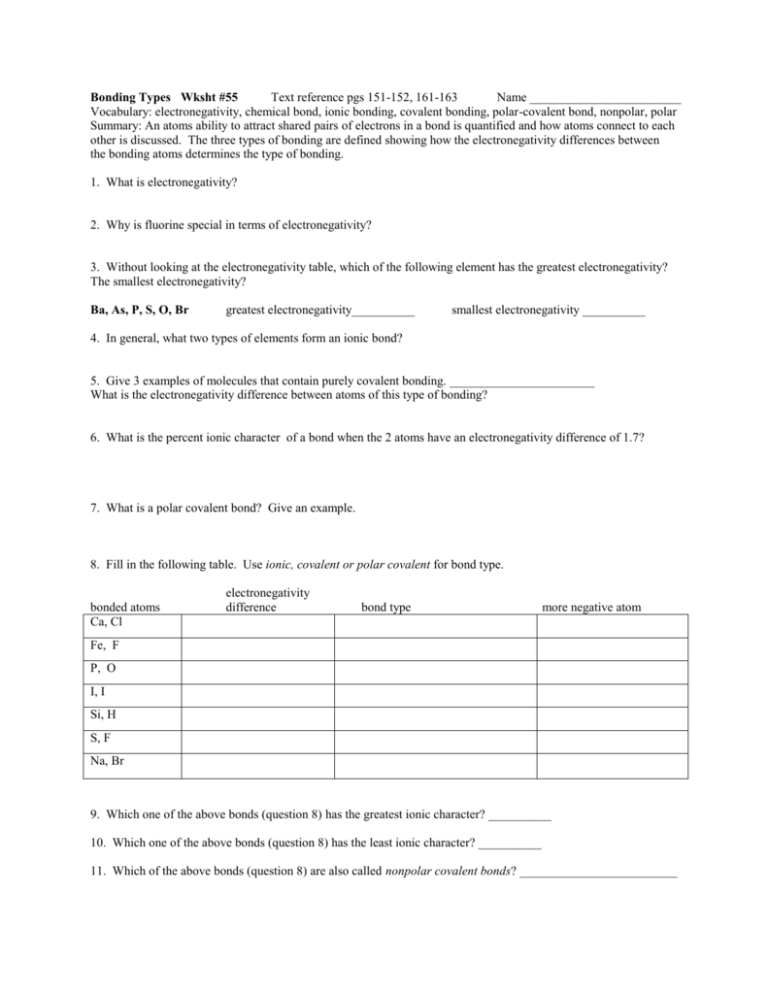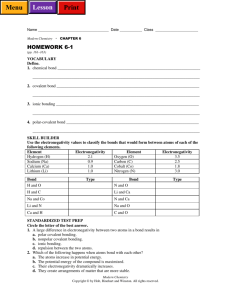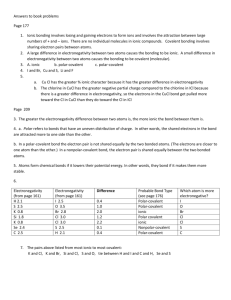Electron Configuration Summary
advertisement

Bonding Types Wksht #55 Text reference pgs 151-152, 161-163 Name ________________________ Vocabulary: electronegativity, chemical bond, ionic bonding, covalent bonding, polar-covalent bond, nonpolar, polar Summary: An atoms ability to attract shared pairs of electrons in a bond is quantified and how atoms connect to each other is discussed. The three types of bonding are defined showing how the electronegativity differences between the bonding atoms determines the type of bonding. 1. What is electronegativity? 2. Why is fluorine special in terms of electronegativity? 3. Without looking at the electronegativity table, which of the following element has the greatest electronegativity? The smallest electronegativity? Ba, As, P, S, O, Br greatest electronegativity__________ smallest electronegativity __________ 4. In general, what two types of elements form an ionic bond? 5. Give 3 examples of molecules that contain purely covalent bonding. _______________________ What is the electronegativity difference between atoms of this type of bonding? 6. What is the percent ionic character of a bond when the 2 atoms have an electronegativity difference of 1.7? 7. What is a polar covalent bond? Give an example. 8. Fill in the following table. Use ionic, covalent or polar covalent for bond type. bonded atoms Ca, Cl electronegativity difference bond type more negative atom Fe, F P, O I, I Si, H S, F Na, Br 9. Which one of the above bonds (question 8) has the greatest ionic character? __________ 10. Which one of the above bonds (question 8) has the least ionic character? __________ 11. Which of the above bonds (question 8) are also called nonpolar covalent bonds? _________________________










